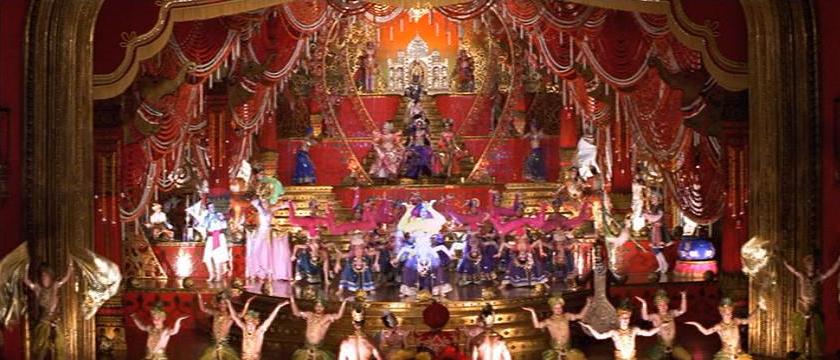| Academy Award Nominations and Winners: |
| Best Picture |
| Best Actress: Nicole Kidman |
| Best Cinematography: Donald McAlpine |
| ★ | Best Art Direction: Catherine Martin; Brigitte Broch |
| ★ | Best Costume Design: Catherine Martin & Angus Strathie |
| Best Film Editing: Jill Bilcock |
| Best Sound: Andy Nelson, Anna Behlmer, Roger Savage, and Guntis Sics |
| Best Makeup: Maurizio Silvi & Aldo Signoretti |
|
| Golden Globe Nominations and Winners: |
| ★ | Best Picture (Musical/Comedy) |
| Best Director: Baz Luhrmann |
| ★ | Best Actress (Musical/Comedy): Nicole Kidman |
| Best Actor (Musical/Comedy): Ewan McGregor |
| ★ | Best Original Score: Craig Armstrong |
| Best Original Song: "Come What May" |
|
| Other Awards: |
| Producers Guild of America: Best Picture |
| Los Angeles Film Critics Association: Best Supporting Actor (Broadbent; also cited for Iris); Best Production Design (Martin) |
| National Board of Review: Best Picture; Best Supporting Actor (Broadbent; also cited for Iris) |
| European Film Awards: Screen International Awards |
| British Academy Awards (BAFTAs): Best Supporting Actor (Broadbent); Best Original Score; Best Sound |
| AFI Awards: Best Film Editing; Best Original Score |
| Satellite Awards: Best Picture (Musical/Comedy); Best Director; Best Actress, Musical/Comedy (Kidman);
Best Actor, Musical/Comedy (McGregor); Best Supporting Actor, Musical/Comedy (Broadbent); Best Art Direction; Best Costume Design; Best Original Score |

